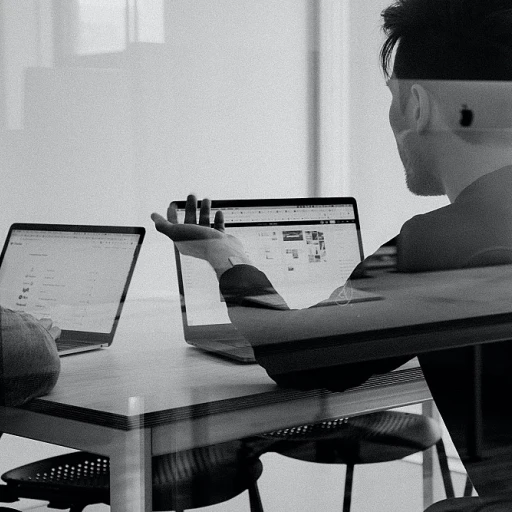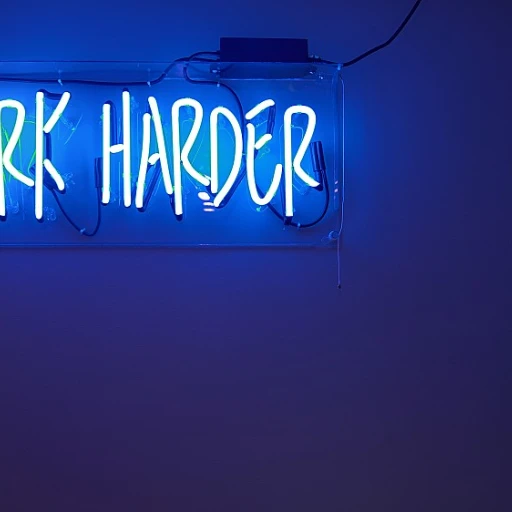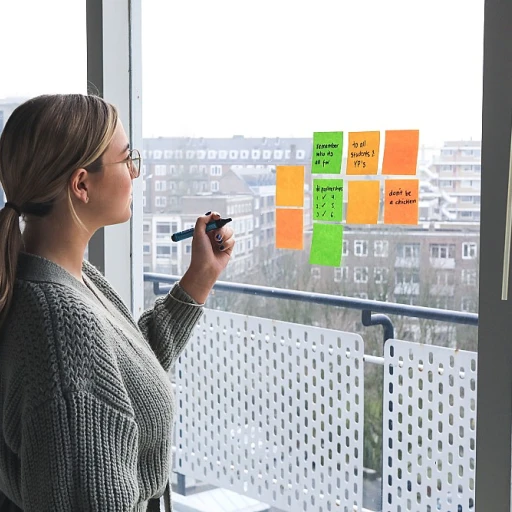The Aging Workforce: A New Era
A Rising Silver Wave
As the sun sets on traditional career paths, a new dawn breaks for the aging workforce, ushering in a time rife with both challenges and opportunities. The demography of many nations is shifting, and as life expectancy increases, so does the probability of someone embarking on what could be considered a second career. Many older individuals are not necessarily ready to hang up their hats, finding fulfillment in continued work while sharing valuable experience gathered over decades.
The prevailing notion that retirement is the ultimate goal has evolved. What we're observing is a growing appreciation for the knowledge and skills senior employees offer. As businesses adjust to accommodate this demographic, there's an embrace of flexible work arrangements and virtual collaboration. These changes not only help retain valuable talent but also enhance the quality of life and well-being for older workers, aligning with holistic health strategies being prioritized in workplace environments.
This evolution, however, requires organizations to reassess management styles and workplace culture, ensuring that age diversity becomes an asset rather than a hurdle. The integration of seasoned personnel with younger generations fosters a reciprocal learning environment—a preview of the dynamic, inclusive workplaces that future generations are to inherit.
Thus, the aging workforce continues to be a critical piece of the shifting demographic puzzle, with implications perhaps echoing into the youth-led future of work or the gender-equity movement gaining momentum among working women. As we explore these issues in depth, the importance of flexible and forward-thinking policies cannot be overstated.
Women in the Workforce: Breaking Barriers
Women Leading the Charge in Modern Workspaces
In recent years, women have increasingly taken center stage in reshaping the professional landscape. This evolution reflects the gradual dismantling of barriers that once limited their participation and growth in various sectors. As we delve into their journey, we see a tapestry woven with resilience, ambition, and determination.
The changing demographics of the workforce highlight the critical role women are playing in fostering diversity and innovation. This shift is not just a testament to their capabilities but also a reflection of organizations' growing recognition of the valuable perspectives and talents women bring to the table. From tech startups to established corporations, the presence of women in leadership roles continues to ascend, challenging the status quo and pioneering new pathways for future generations.
Despite these advancements, challenges remain. Gender pay gaps, under-representation in certain industries, and work-life balance struggles often serve as hurdles on the journey toward an egalitarian workplace. Nonetheless, with the momentum gained, there is a significant opportunity for women to influence workplace policies, advocate for equal opportunities, and mentor rising talent.
This progression sets the stage for an inclusive workforce. As organizations proactively embrace flexibility and gender-neutral policies, they not only enhance productivity but also create an environment where creativity thrives. Importantly, this evolution aligns with broader trends across global markets, underscoring a universal shift toward valorización of diverse workforce contributions.
In symphony with the aging and youth workforce dynamics, women breaking barriers further enrich the tapestry of today's labor pool. As these narratives converge in future workspaces, they pave the way for holistic innovation and represent a decisive movement towards an equitable future.
Youth and the Future of Work
Embracing Gen Z and the Millennials
As we navigate the evolving landscape of workforce demographics, one of the most compelling aspects is the burgeoning presence of Gen Z and Millennials. These younger generations are not just scaling the ranks; they're reshaping the very fabric of the workplace. Understanding their priorities and perspectives is crucial for businesses eager to thrive in this new era.
Gen Z and Millennials are digital natives, having grown up in a world teeming with technology. This technological fluency is driving significant changes in work processes and expectations. Most notably, these younger workers champion flexibility and remote work options, a trend accelerated by an increasingly digital workplace. Not only do they value work-life balance, but they also prioritize purpose-driven careers, seeking roles that align with their values and foster personal growth.
Employers must also recognize that these generations prioritize continuous learning and adaptation. With technology rapidly evolving, the ability to reskill and upskill is more important than ever. To build a resilient workforce, businesses can support these aspirations by investing in comprehensive training programs. Organizations that facilitate such learning environments will likely outperform others in attracting and retaining top young talent.
Furthermore, fostering an inclusive and diverse workplace culture is of paramount importance. As discussed earlier, women in the workforce are breaking barriers, challenging traditional roles, and seeking leadership positions more than ever. Encouraging a similar breaking of barriers among younger generations can enhance diversity and inclusion efforts, offering fresh perspectives and innovative ideas.
It is clear that understanding and catering to the needs of Gen Z and Millennials is crucial for future success. To learn more about equipping the next generation with the necessary tools for this dynamic environment, read about the
essential skills for tomorrow's workplace. By preparing for these shifts, organizations can ensure sustained growth and adaptability in this era of change.
Global Trends: A Comparative Look
Understanding the Shifting Tides Across the Globe
In the global landscape of workforce demographics, each region paints its unique picture, shaped by cultural, economic, and societal influences. While some nations grapple with aging populations, others experience a youthful surge, highlighting the richness and diversity in demographic trends worldwide.
Countries with rapidly aging populations, such as Japan and many Western European nations, face significant challenges as a substantial portion of their workforce approaches retirement. This issue demands innovative solutions like embracing automation and implementing policy changes to attract younger talent.
On the other end of the spectrum, nations with burgeoning youth populations, particularly in Africa and parts of Asia, are presented with both opportunities and challenges. These regions can harness this youthful energy to spur economic growth, but only if they can provide adequate education, employment opportunities, and necessary infrastructure.
Additionally, the role of women in workforces around the world is undergoing transformation, as more women overcome barriers and integrate into various sectors. This shift has profound implications not only for gender equality but also for organizational dynamics and economic performance globally.
Overall, understanding these global trends is critical for businesses and policymakers. It requires a holistic approach, acknowledging both local peculiarities and global paradigms, to foster a resilient, inclusive, and sustainable workforce that complements the evolving demographic landscape.
The Role of Technology in Workforce Dynamics
Bridging the Digital Divide
As the future of work evolves, technology emerges as a central player in shaping workforce dynamics. It's not just about the tools and platforms that employers implement; it's also about the workforce's ability to adapt and thrive in this new digital landscape. This interplay between technology and workforce demographics is transforming traditional roles and creating new opportunities for innovation and growth.
The impact of technology on workforce demographics is particularly evident when considering the aging workforce. As discussed previously, many older employees bring decades of experience but may face challenges in adapting to rapidly evolving tech environments. Organizations are investing in upskilling and reskilling initiatives to ensure that all employees, regardless of age, can contribute effectively to technological advancements.
Similarly, the incorporation of technology is pivotal for women breaking barriers in the workplace. Digital tools and platforms facilitate remote work, flexible hours, and improved access to global networks, offering women more opportunities to blend their professional and personal lives seamlessly.
Youth, often referred to as digital natives, are naturally equipped with tech-savvy skills that make them the vanguard of the future workplace. Their innate ability to navigate digital ecosystems positions them to drive innovation and creativity in their roles. The challenge lies in harnessing their potential alongside other segments of the workforce to foster an inclusive and dynamic work environment.
In our globalized world, technology erases geographical boundaries, allowing companies to tap into diverse talent pools. As we juxtapose workforce trends around the globe, technology acts as both a great equalizer and a tool for differentiation, ensuring competitive advantage in various markets.
Ultimately, the role of technology in shaping workforce dynamics is multifaceted, affecting not only operational efficiency but also fostering inclusive growth and well-being within the workplace.
Health and Well-being in the Workplace
Prioritizing Employee Well-being in Modern Work Environments
In the rapidly evolving landscape of workforce demographics, one area that is gaining increasing attention is employee well-being. As we continue to see significant shifts, with the aging workforce entering a new era and women breaking barriers, it is crucial for organizations to remain cognizant of how these changes impact employee health and well-being.
A key focus in modern work environments is recognizing the diverse needs of different demographic groups. For instance, the aging workforce may require more flexible work arrangements or health interventions to maintain productivity and job satisfaction. These tailored approaches not only improve the quality of life for older employees but also help in reducing turnover and associated costs.
Simultaneously, as more women enter the workforce, companies are finding it beneficial to introduce initiatives that support work-life balance and provide equal opportunities for career advancement. Creating an inclusive and supportive environment helps alleviate stress and burnout, which are prevalent among employees juggling multiple responsibilities.
Moreover, as discussed in the context of youth and the future of work, younger employees entering the workforce bring fresh perspectives and expectations. Companies must adapt by fostering a culture that promotes mental health and well-being, integrating innovative technology solutions for better work experiences.
Organizations are also recognizing the importance of holistic health programs that encompass mental, physical, and emotional well-being. Such initiatives can involve everything from wellness workshops and counseling services to fitness programs and mental health days. By prioritizing these elements, businesses create a resilient workforce that is better equipped to face the dynamic challenges posed by global trends.
Ultimately, a focus on employee health and well-being is not just a moral obligation but a strategic advantage. By investing in the well-being of their workforce, companies cultivate a positive work culture that drives engagement, enhances productivity, and retains top talent in an increasingly competitive global market.









